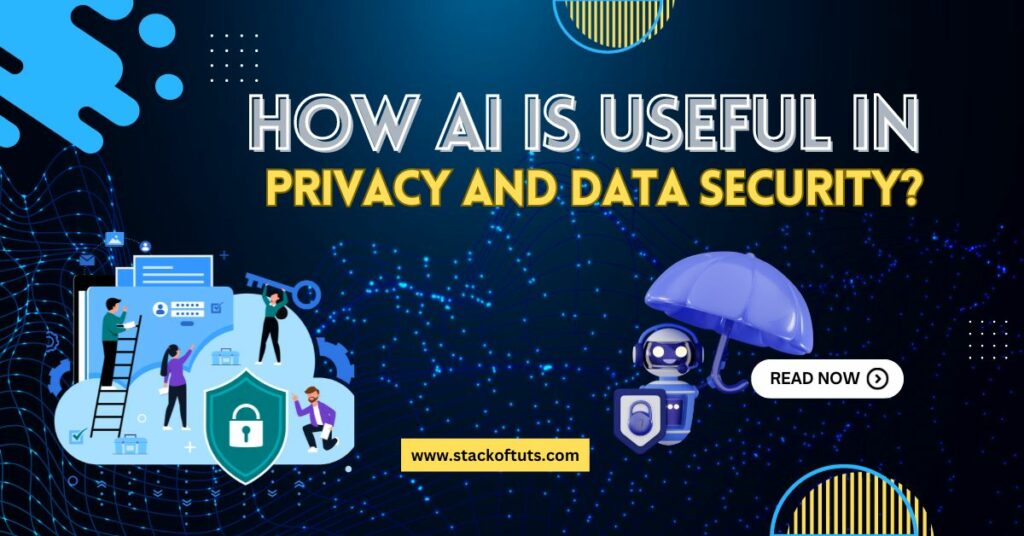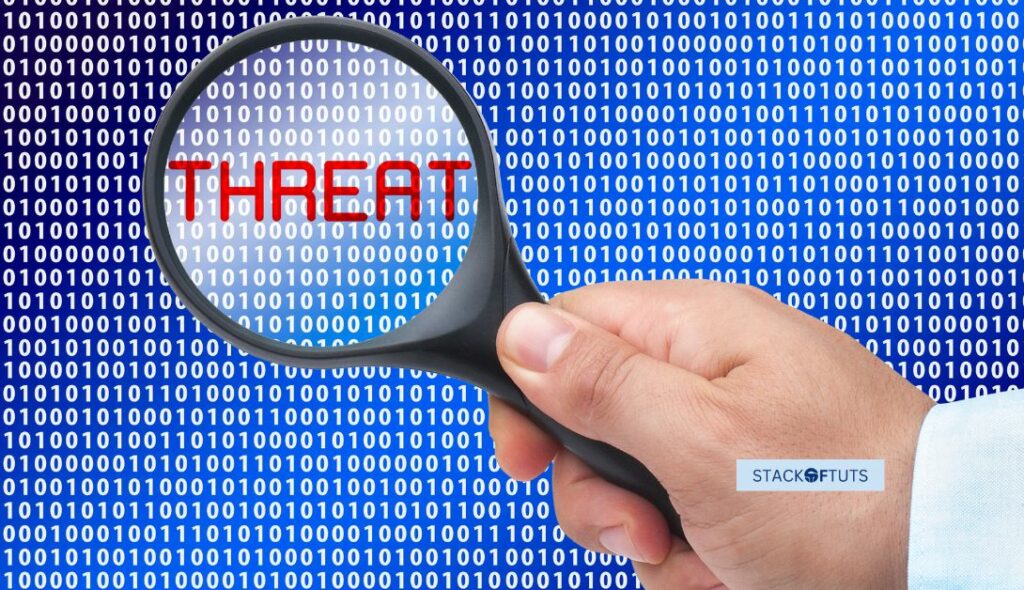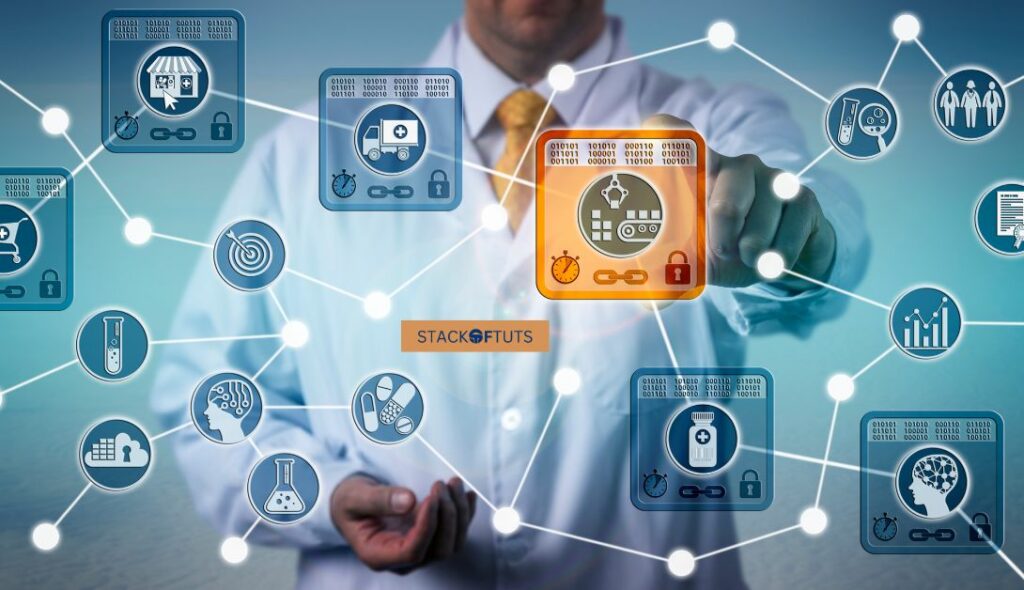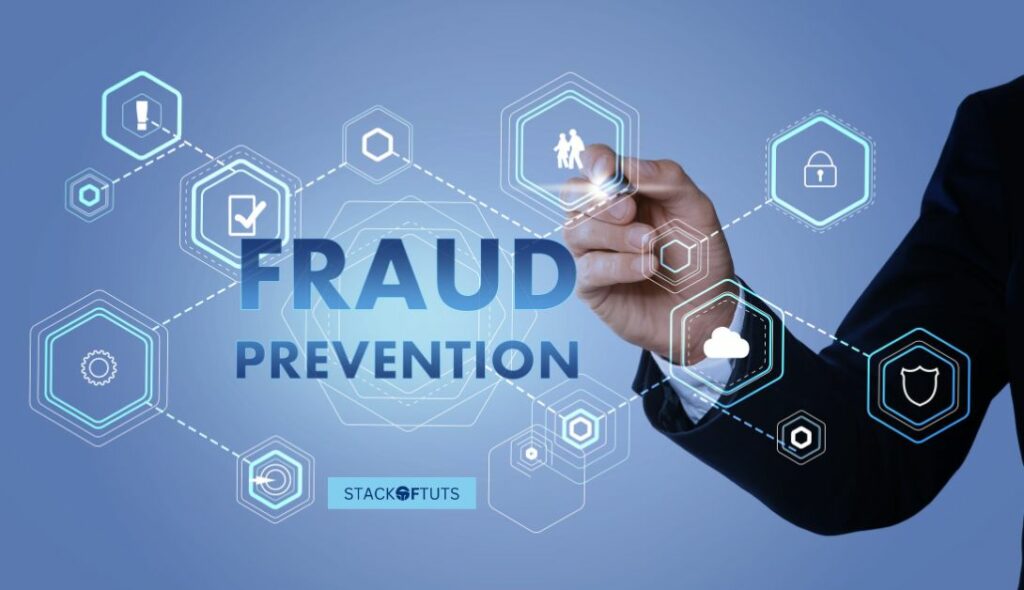
In the digital age, privacy and data security are paramount. With cyber threats evolving, protecting sensitive information has become a complex task. Enter artificial intelligence (AI), a game-changer in bolstering our digital defences. How AI is useful in privacy and data security cannot be overstated. It enhances existing security measures and introduces innovative ways to protect data.
In this article, I will discuss the multifaceted roles AI plays in fortifying privacy and safeguarding data.
What is artificial intelligence (AI) and how is it changing our lives in many ways?
Artificial intelligence (AI) refers to the capability of machines, particularly computers, to emulate human cognitive functions. It encompasses a range of activities like understanding complex data, making decisions, and refining its operations over time.
AI’s influence is expanding across numerous facets of daily life, including tailor-made shopping suggestions, digital voice assistants, medical analysis, and more. With its proficiency in analysing extensive data sets and enhancing its accuracy, AI often surpasses human performance in tasks that require identifying trends and forecasting outcomes.
Benefits of AI as a useful tool for privacy and data security
Data classification and anonymization

When it comes to handling sensitive data, AI algorithms are incredibly adept at classifying and protecting personal information. These smart algorithms scan through vast datasets and pinpoint which pieces of data are sensitive. For example, they can identify personal information (PII) like names, addresses, and social security numbers.
The AI actively scans for PII, and upon detection, it anonymizes it. This process involves stripping away or concealing personal details to prevent linkage to an individual’s identity. Tools such as IBM Watson Knowledge Catalogue employ AI to classify and anonymize sensitive data automatically, preserving privacy while retaining the data’s analytical value.
Threat detection and prevention

AI-powered intrusion detection and prevention systems (IDS/IPS) are like digital watchdogs for network traffic. They continuously monitor data flows, looking for anything out of the ordinary. By analysing patterns and behaviours, AI can spot and block cyberattacks as they’re happening. This kind of AI isn’t just reactive; it’s proactive, too, often stopping threats before they can harm.
Cisco’s Next-Generation Intrusion Prevention System is a good example. It uses AI to identify unusual patterns that could indicate a threat. Because it works in real time, it helps prevent potential breaches from escalating.
Data Encryption and Access Control

Data encryption is essential for safeguarding sensitive information. AI can make this process even more secure by creating complex encryption keys that are tough for hackers to crack. Moreover, AI helps in managing who gets to see what data. By learning normal user behaviour, AI systems can flag or block unusual access attempts, ensuring that only authorised personnel can access certain data.
AI-driven tools like Tessian use machine learning to understand typical email behaviour to prevent unauthorised data access, effectively keeping sensitive information locked down.
Fraud detection and prevention

AI shines brightly in the realm of fraud detection and prevention. By scrutinising patterns in financial transactions or insurance claims, AI algorithms can sniff out fraud that might slip past human eyes. They’re trained to notice the signs of fraud, whether in spending patterns, login attempts, or claim submissions.
For instance, Mastercard uses AI-powered technology to analyse every transaction in real time, assessing the risk of fraud. This technology, known as decision intelligence, makes it easier to catch fraud early on and reduce financial losses.
Privacy-Enhancing Technologies (PETs)

Privacy-enhancing technologies (PETs) are the tools and methods designed to help keep data private, even when it’s being used or analysed. AI is at the forefront of developing new PETs. These AI-driven PETs balance the need for data privacy with the ability to utilise data for insights.
Differential privacy, for instance, adds a little “noise” to datasets so individuals cannot be identified while still allowing for accurate analysis. Secure multi-party computation (SMPC) lets different parties compute results using their private data without actually revealing that data to each other. Google’s TensorFlow Privacy is paving the way for differential privacy, ensuring machine learning models benefit from data without compromising individual privacy.
Challenges of using AI in privacy and data security

AI’s integration into privacy and data security indeed offers groundbreaking progress, yet it also brings several key challenges that warrant careful consideration:
- Clarity and Openness: AI’s decision-making process can be intricate and not easily understood, which may affect trust and accountability, particularly in privacy-sensitive situations.
- Fairness and Equality: There’s a risk of AI systems reinforcing existing prejudices found in training data, which could result in unfair treatment in scenarios like job recruitment, financial lending, and law enforcement.
- Regulatory Adherence and Data Handling: AI needs to navigate an array of privacy laws, such as GDPR in Europe and CCPA in California, requiring meticulous design to ensure lawful management of personal information with proper consent from individuals.
- Security from Malicious Use: AI is susceptible to sophisticated threats where attackers deliberately tamper with data or the AI to undermine security and privacy. Ongoing research into advanced defence measures is essential to counter these risks.
- Algorithmic Audit and Monitoring: Continuously monitoring and auditing AI systems for potential biases, errors, and vulnerabilities is essential to ensuring their long-term reliability and trustworthiness.
- User Education and Awareness: A public understanding of AI capabilities and limitations is crucial for informed decision-making and responsible AI adoption. Educational efforts should promote transparency, accountability, and ethical considerations in AI development and deployment.
- International Regulatory Harmonisation: As AI spreads around the world, it is important to make sure that data privacy laws are consistent and that there are clear rules for how AI should be developed and used in all areas. This will help protect everyone and encourage responsible innovation.
FAQs
AI masks sensitive data and spots potential security threats, enhancing privacy and preventing data misuse.
AI examines transactions to pinpoint unusual patterns that may indicate fraud, enabling quick preventative action.
PETs maintain user privacy during data analysis. AI innovates these technologies for safer data handling across various sectors.
AI must remain understandable to users, avoid inherent biases, and comply with privacy laws like GDPR and CCPA.
Conclusion
In conclusion, the myriad ways in which AI is useful in privacy and data security are revolutionising the field. From detecting threats to ensuring compliance with privacy laws, AI’s role is not just supportive but transformative. As we become more intertwined with digital advancements, the role of AI in safeguarding our online presence becomes ever more crucial. Leveraging AI promises a more fortified digital era, one where the sanctity of privacy and data security are elevated to match the demands of our deeply connected reality.
Thanks!





